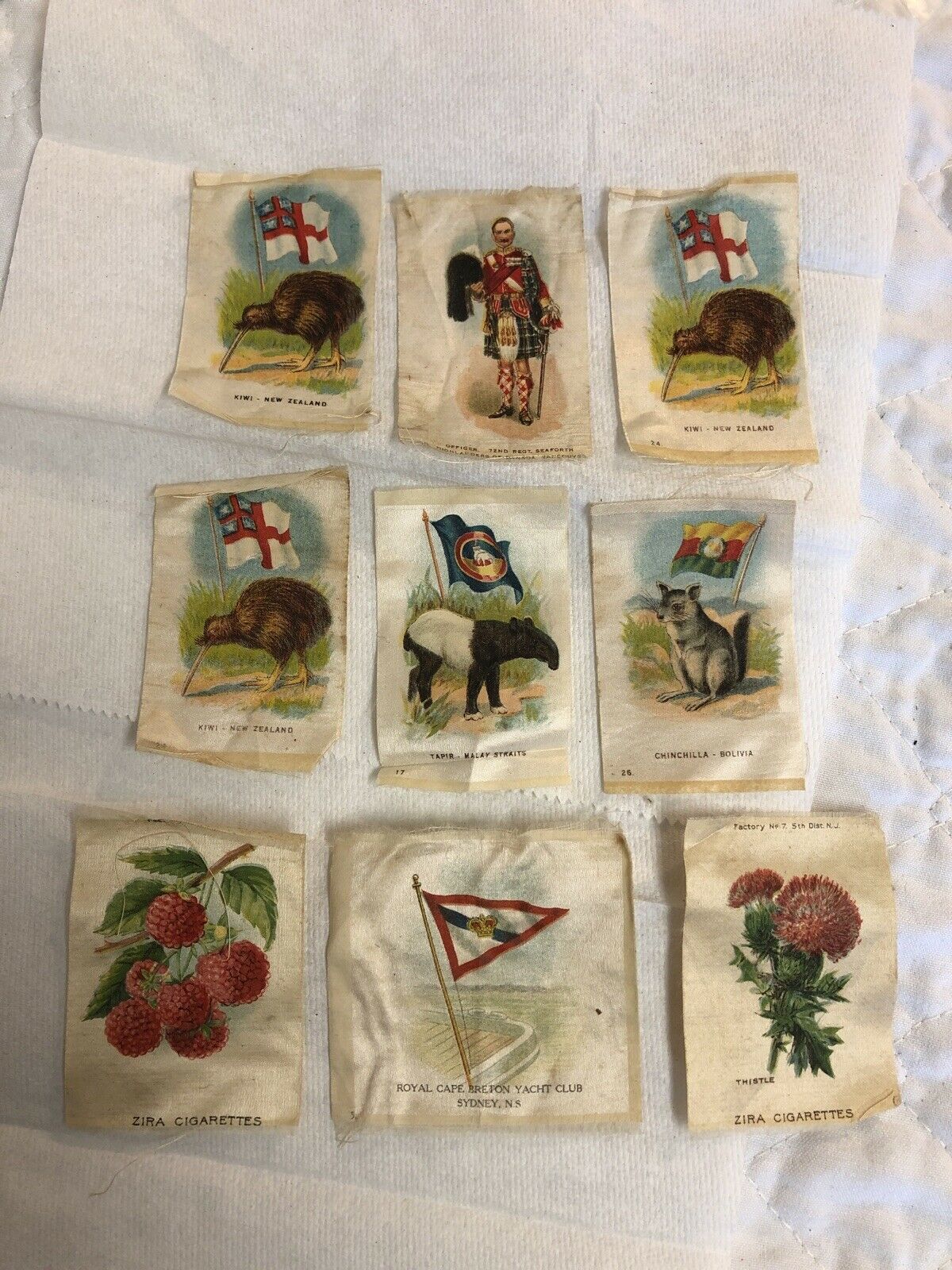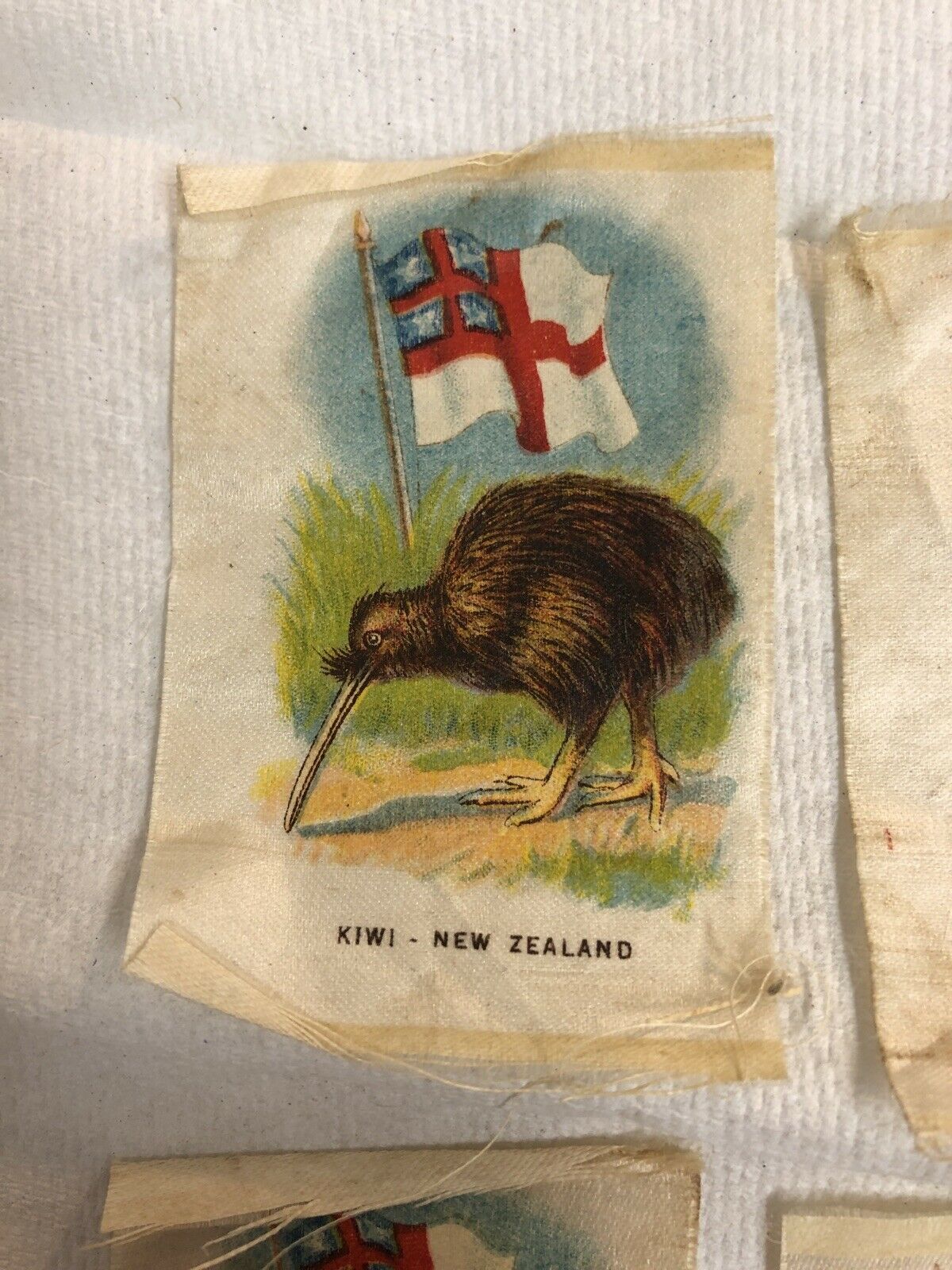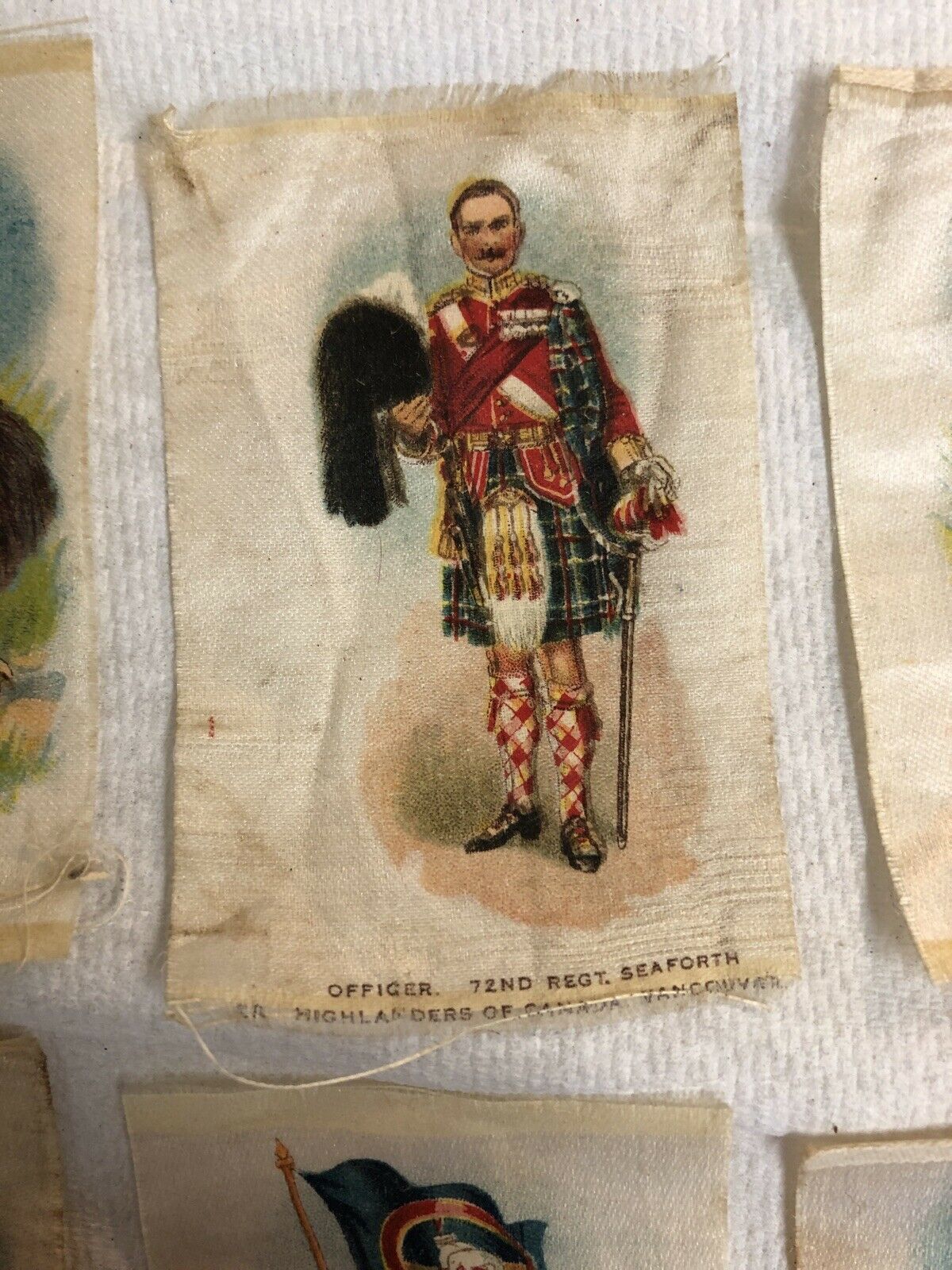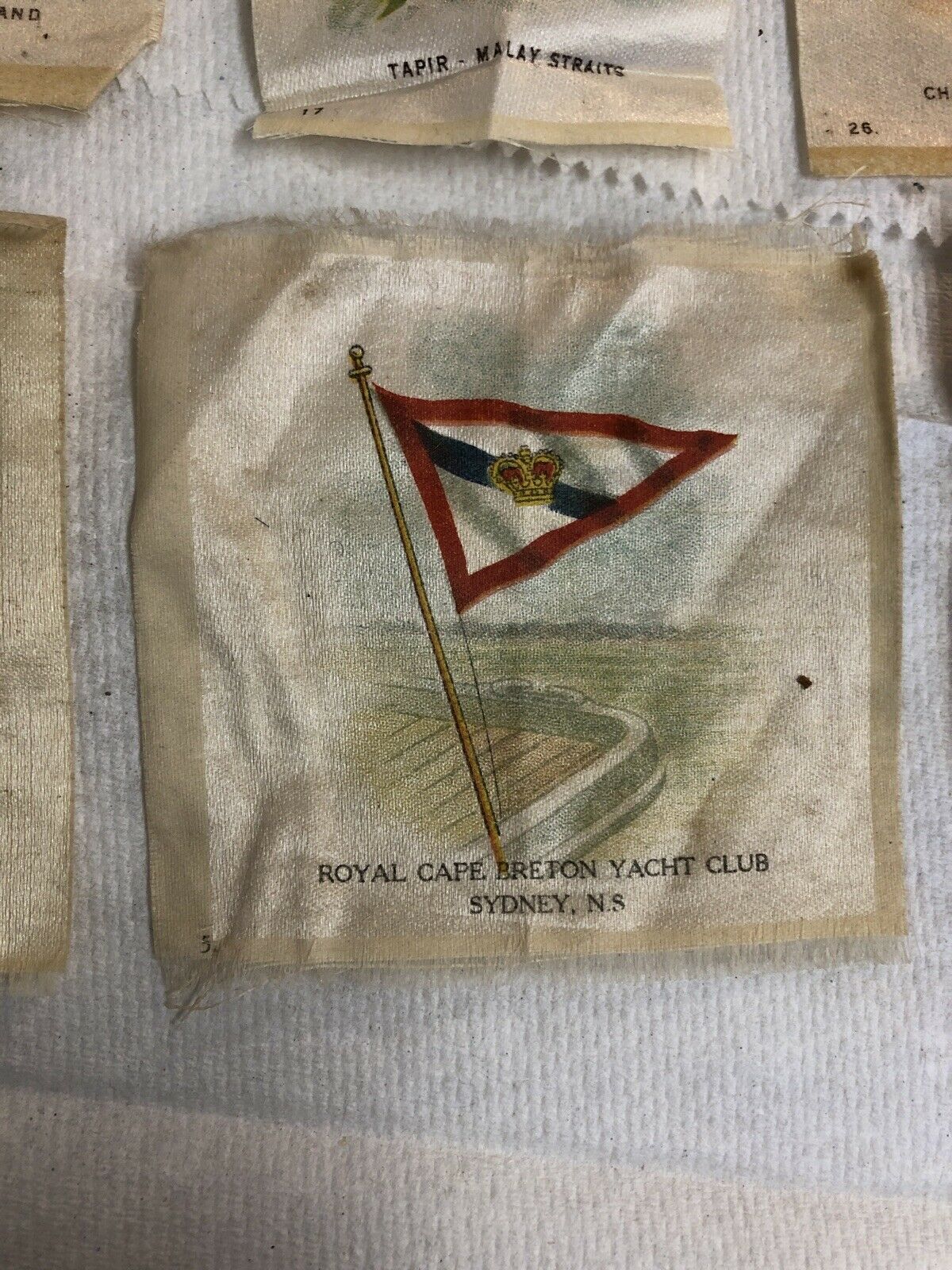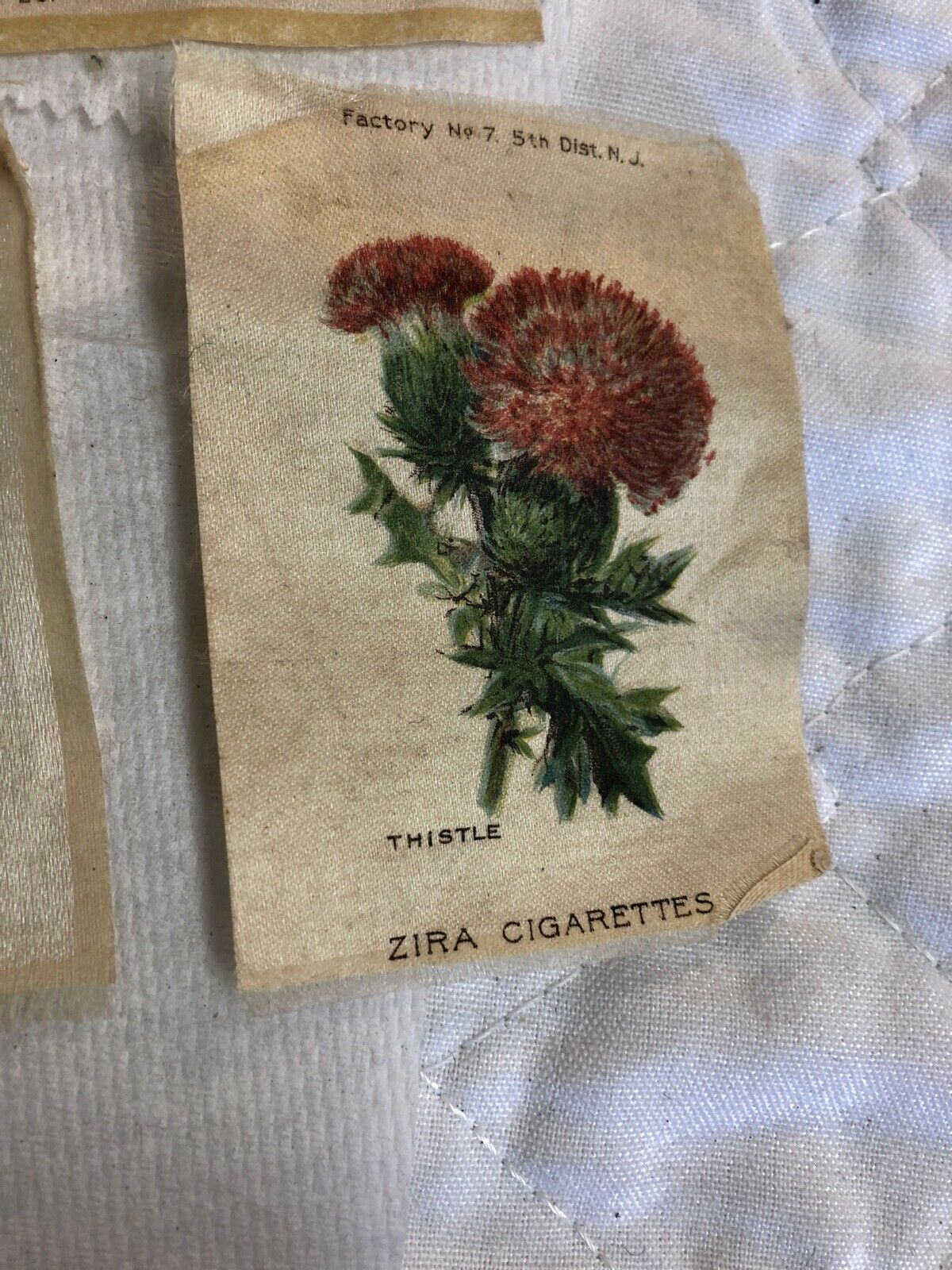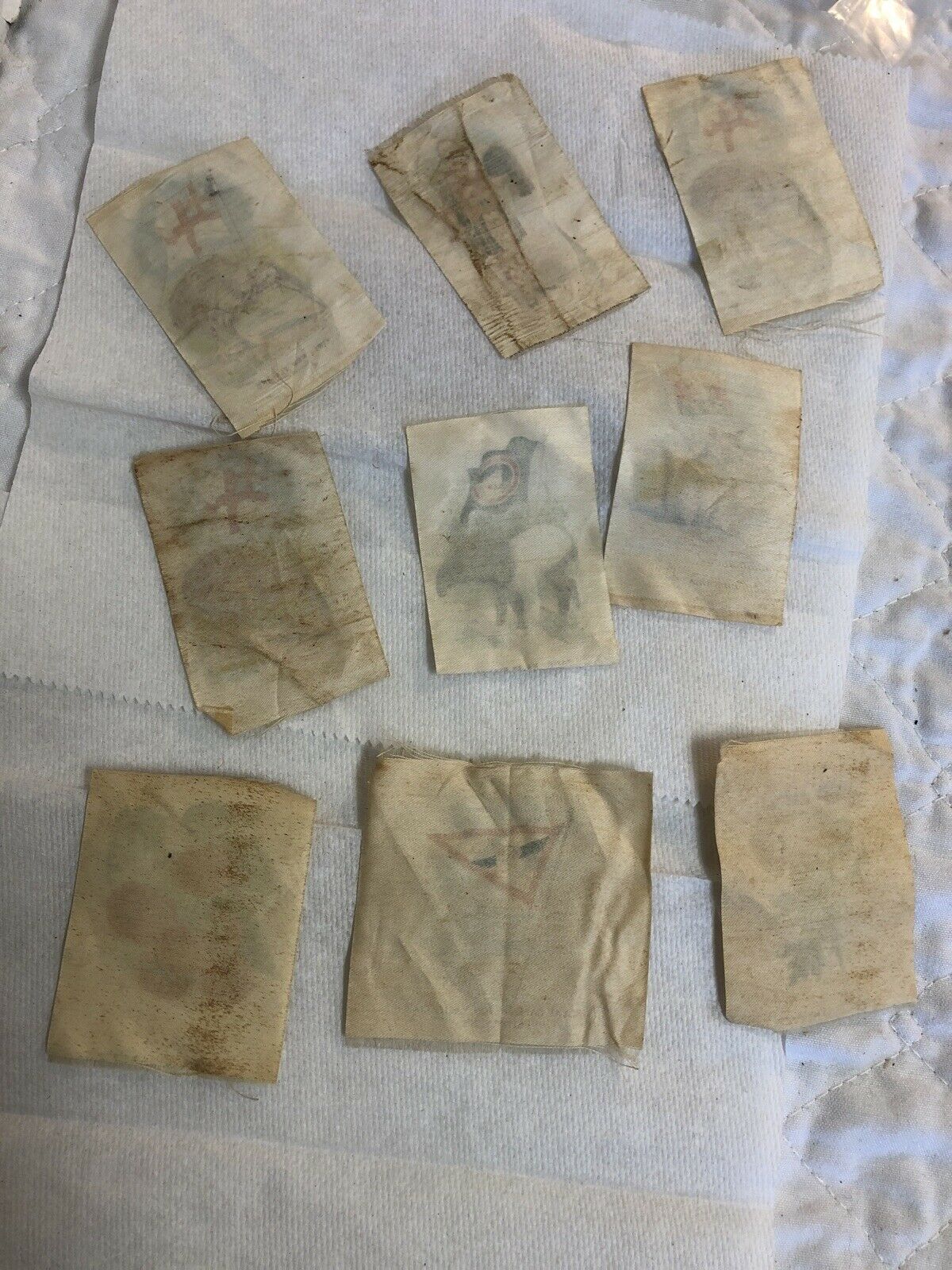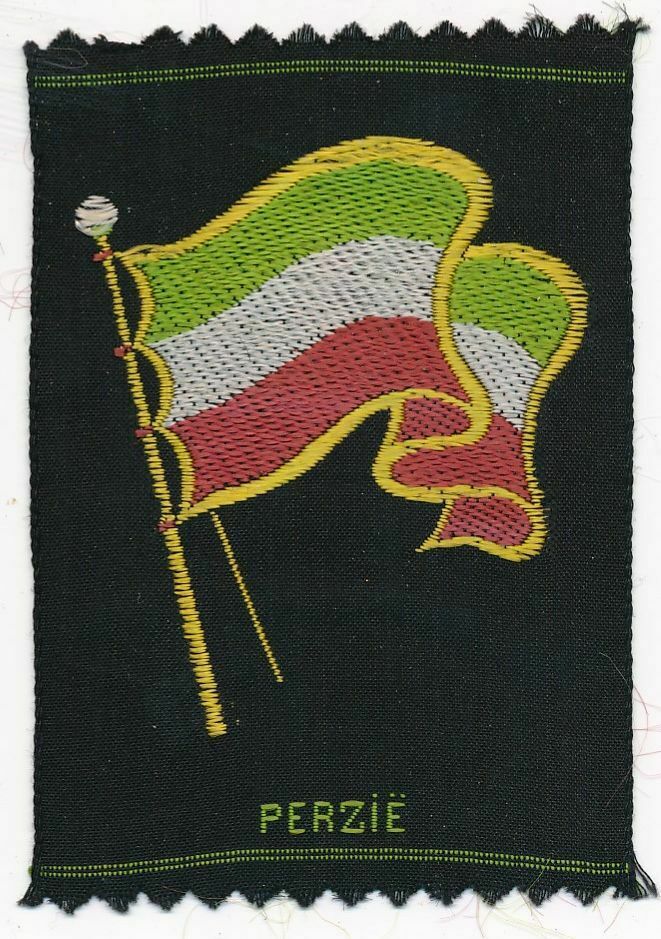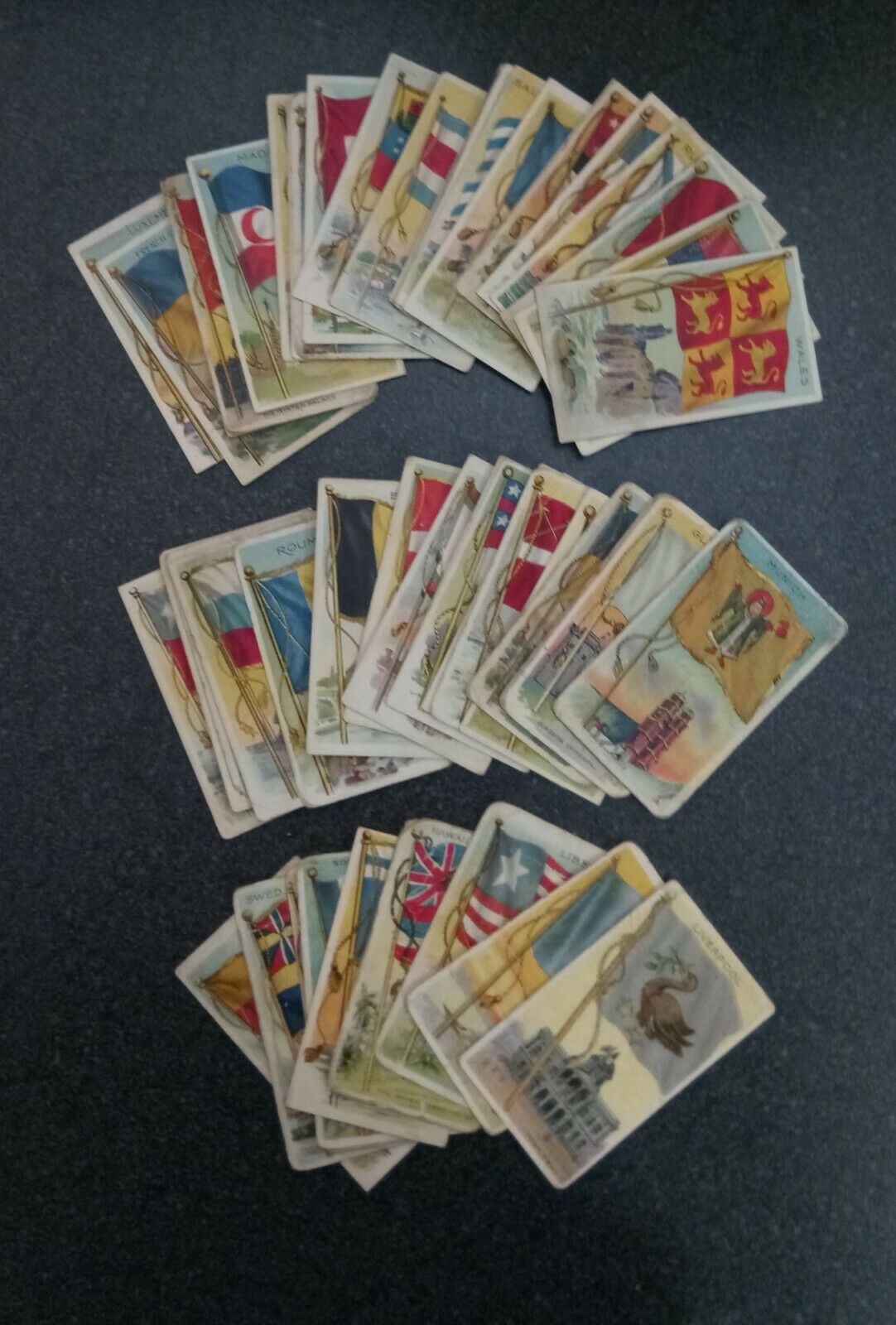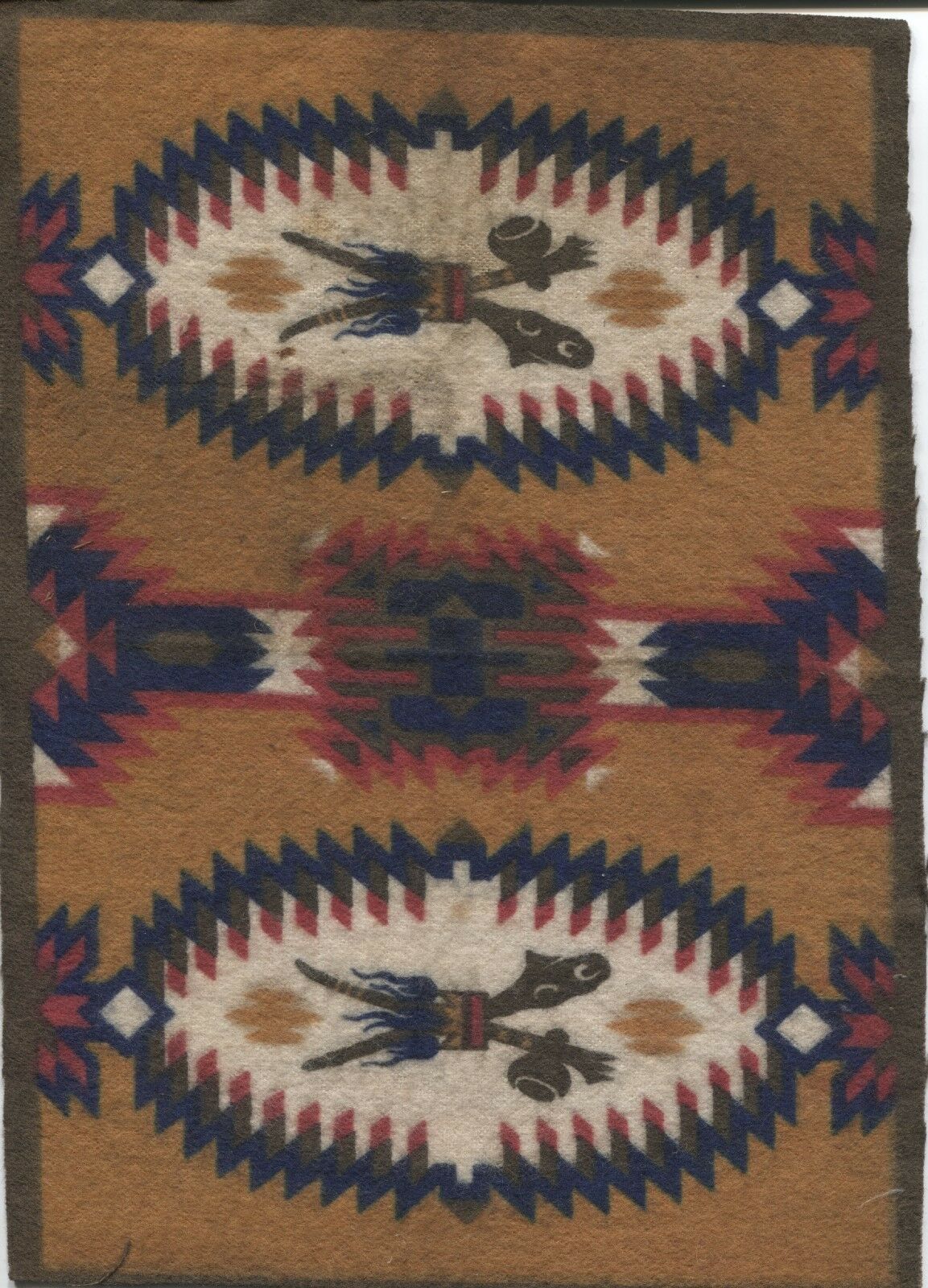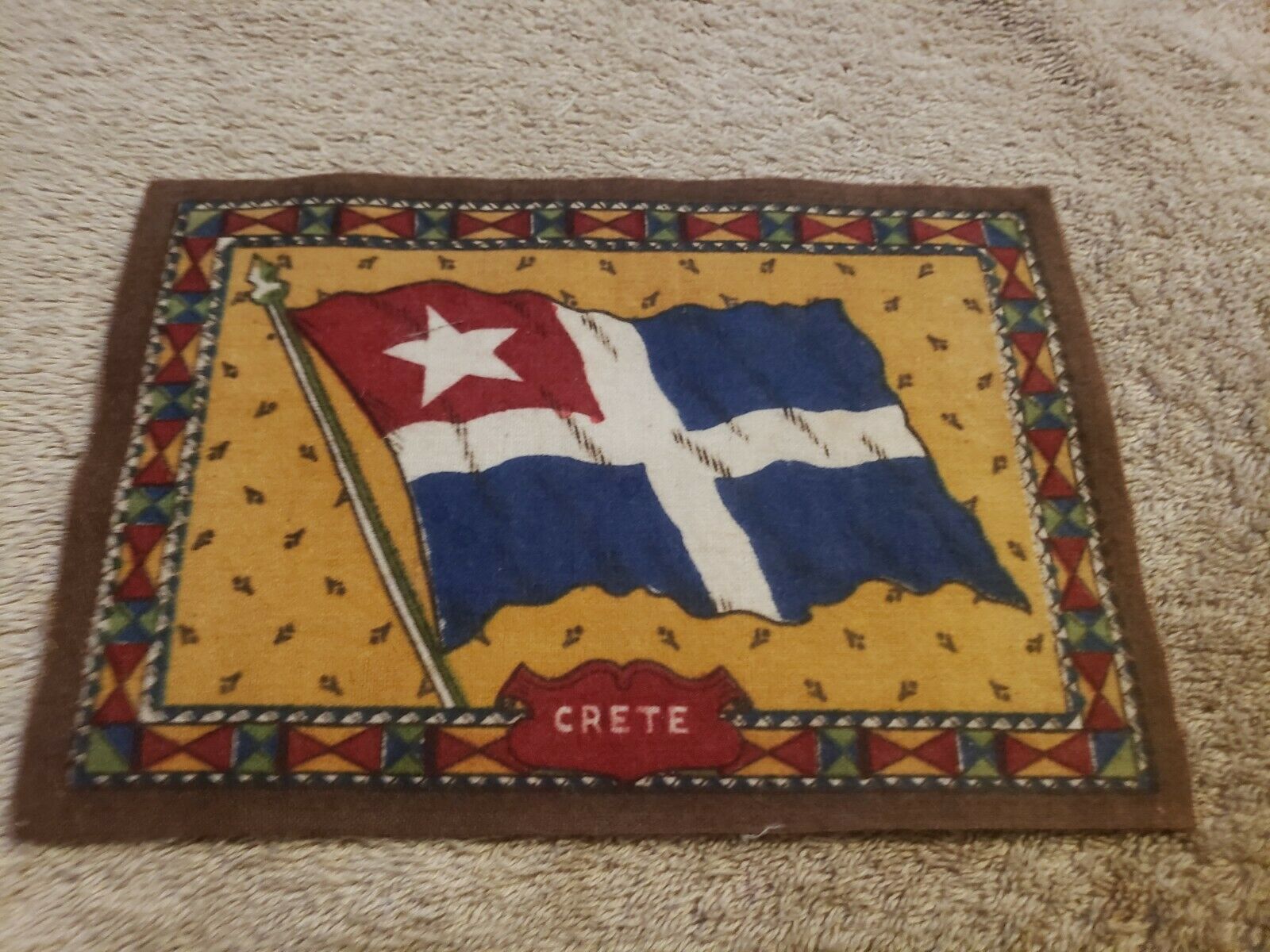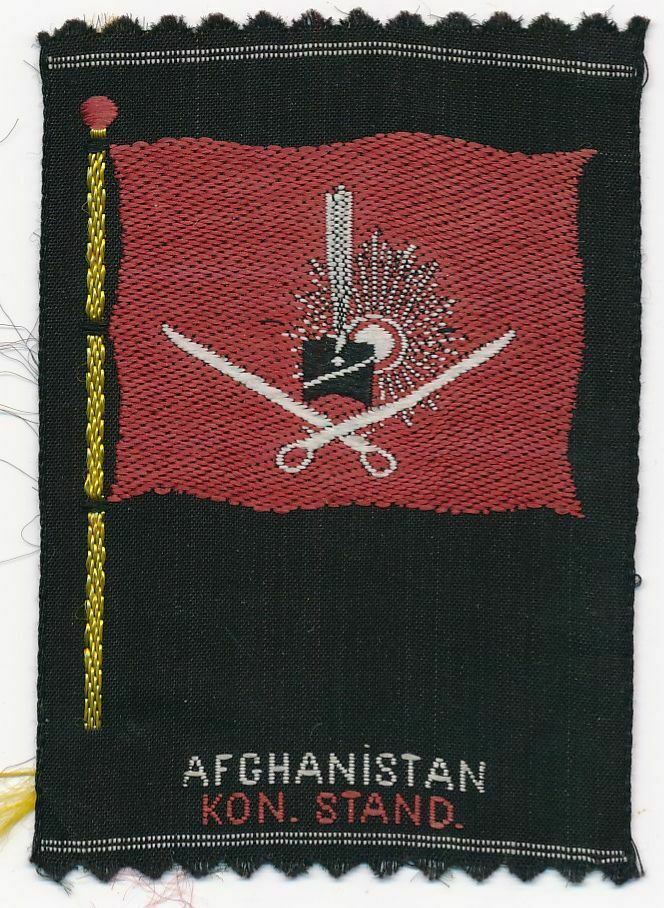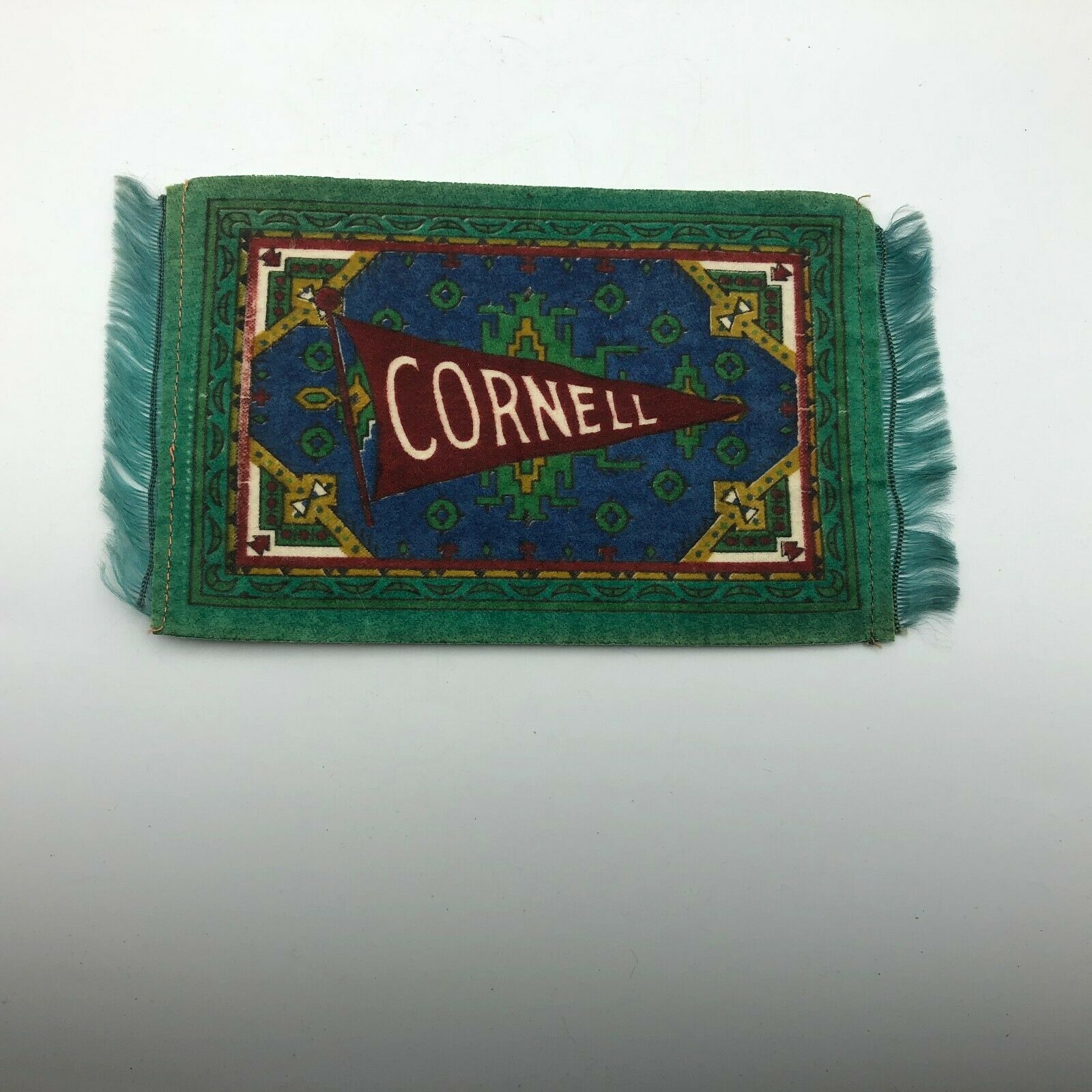-40%
9 Antique Cigarette Silks New Zealand Kiwi Sydney NS Yacht Club Officer Seaforth
$ 5.25
- Description
- Size Guide
Description
9 Antique Cigarette Silks - 3 same New Zealand Kiwi; Sydney NS Royal Cape Breton Yacht Club; Officer 72nd Regiment Seaforth Highlanders Vancouver Canada; Zira Cigarettes raspberries; Zira Cigarettes thistle; Tapir Malay Straights #17; Chinchilla Boliva #26. 9 total - the winner gets all 9 as shown. I would call them good condition with some wrinkles but please refer to my 12 detailed photos. Based on some research I believe the yacht club and the highlanders silks are fairly rare.Textile Tobacco Inserts and Premiums
It was between 1905 and 1910 that tobacco companies here in America, began inserting textile items into their cigarette and tobacco products. Most books written on the subject say the fad for these textiles was between 1910 and 1916. They also agree that at the beginning of WWI the practice of inserting textiles into cigarette or other tobacco packaging, here in the United States, was more or less abandoned.
In European countries the practice may have begun somewhat earlier and extended later into the 1920’s - 1940's, so it is possible to find some items from this later period. Tobacciana of all types have been and are still popular collectibles, with many items sold worldwide at auctions, and in recent years through online sites.
Some suggest that the tobacco companies stopped the distribution of these textiles because of the large expense incurred, reportedly costing up to 0,000 a year for one large company. Others suggest that the interest of collectors waned after a decade of collecting the inserts. Whatever the reason, tobacco companies stopped issuing the textile inserts and chose to advertise in other ways. Therefore there is a relatively short window of availability for the tobacco inserts and premiums, and that makes it easier for the quilt historian to date these unusual textile items.
These many years later it may seem odd that textiles like silks and flannels would be used as tobacco product inserts or premiums. But this was all happening at a time when there was much competition between the tobacco companies and advertising was important to entice new customers, and it was a good way to build brand loyalty.
It is thought that the practice of inserting textiles into the tobacco products may have been a direct marketing strategy to entice women into smoking cigarettes, although it wasn’t until several years later that tobacco companies openly seduced women into trying their cigarettes.
It is true that women were encouraged to gather up these small textiles from spouses or friends who used tobacco products and sew them into useful and beautiful items. These tobacco related textiles were varied and colorful, and women were encouraged through literature distributed by the tobacco companies, to use them to make things for the home, including quilts, throws, pillows, table covers, purses and even curtains for windows and doors.
One of the most popular of the tobacco inserts or premiums was the tobacco or cigarette “silk”. While they are called silks they were actually made from a variety of fabrics such as silk or silk satin, a cloth combination of silk and cotton, a cotton sateen or even a plain woven cotton. The silks were often beautifully poly-chrome printed with varied subjects, and were usually printed with the tobacco company name.
Silks came printed in dozens of themes and in series formats. Very often the designs were the same types of designs as those seen on the cigarette cards.
Themes included floral designs of every type, flags of all the different nations of the world, American Indian motifs including the great Indian Chiefs, popular actresses and actors, bathing beauties, Kings and Queens of the countries of Europe, animals of all types, and military themes with soldiers and medals from many countries, just to name a few.
As with the cigarette cards, many of these silks were distributed in series, with some categories having dozens of different designs. One of the most popular categories was that of popular sports activities, with ballplayers and athletes of every variety printed on the silks. Some silks unite two popular subjects, for example colleges and sports. These silks bear the name of popular American colleges, and depict designs showing athletes participating in the sports activities of that college.
Tobacco silks were distributed in different ways. Many like the small 1 ¾” x 3” silks were inserted in cigarette packages or cartons (see the store sign above showing the silk in the package of Zira cigarettes). Others were premiums given in exchange for coupons. Consumers could trade coupons for the larger silks, many measuring from 3 to 5 inches tall. One of the largest silks offered in the coupon catalogs is what was called a “pillow top” and is approximately 24 inches square. These larger silks displayed some of the same lovely designs as the smaller silks, while others were beautifully hand painted with fantastic landscapes, including one Japanese seaside scene.
